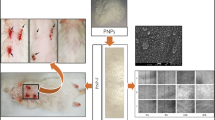Abstract
Background
Cotton balls and surgical gauzes (CSG) have been routinely used for mopping fluids and blood in surgeries. Polyurethane sheets (PUS) are increasingly used instead of CSG. The factors influencing the absorption of fluids by CSG and PUS have not been studied in detail. There are a variety of factors that could be modified by the manufacturer while a limited number of them could be manipulated by the operator.
Materials and Methods
Mathematical models and equations have been employed in this study. The impact of absorbency was performed by modulating various factors.
Results and Discussion
A variety of factors such as thickness, density of the web, radius of fiber, temperature, surface tension and viscosity of fluid, all influenced the absorption rate and capacity to varying degrees. The optimal variation by which the PUS can be effectively used is discussed. The suggested mathematical model will help the operator to choose the appropriate type of PUS based on the individual’s needs.
Conclusion
In an area of rapidly developing technology and change in biomaterials, where the choice of such materials are overwhelming, hopefully this basic knowledge will help the clinician to make a more educated and rational decision.




Similar content being viewed by others
References
Shimamoto T (2011) Polyurethane sheet: a potential substitute of surgical cotton gauze. J Cardiothorac Surg 6:26
Boateng JS, Matthews KH, Stevens HNE, Eccleston GM (2008) Wound healing and drug delivery systems: a review. J Pharm Sci 97:2892–2923
Jiong C, Chun-mao C, Guo-liang S, Zhi-jian T, Xiao-wei L (2007) Randomized control trial of the absorbency of four dressings and their effects on the evaporation of burn wounds. Chin Med J 120:1788–1791
Gupta BS, Hong CJ (1994) Changes in dimensions of web during fluid uptake and its impact on absorbency. Tappi J 77:181–188
Hall SD, Ponder RB (1992) Nonwoven wound care products. Ostomy Wound Manage 38:24–32
Terrill P, Sussman G, Bailey M (2003) Absorption of blood by moist wound healing dressings. Prim Intent 11:7–10, 12–17
Palamand S, Brenden RA, Reed AM (1992) Intelligent wound dressing and their physical characteristics. Wounds Compend Clin Res Pract 3:149–156
Talaia MAR (2007) Terminal velocity of a bubble rise in a liquid column. Int J Appl Sci Eng Technol 4:264–268
Zeltzman P, Downs MO (2011) Surgical sponges in small animal surgery. Compendium, Accessed from www.vetlearn.com on 7 April 2012
Lee J, Cho Y, Lee J, Kim H, Pyun D, Park M, Yoon TR, Lee H, Kuroyanagy Y (2001) Preparation of wound dressing using hydrogel polyurethane foam. Trends Biomater Artif Organs 15:4–6
Kelly DJ, Kim DW Highly absorbent polyurethane foam. United state’s Patent Number 4,985467 dated 15th January 1991
Acknowledgments
The authors would like to thank Dr. S. Ramachandran, Principal, Ragas Dental College and Prof. Dr. A. Kanagaraj, Chairman of Jaya Group of Institutions, Chennai for their constant support and encouragement.
Author information
Authors and Affiliations
Corresponding author
Rights and permissions
About this article
Cite this article
Thavarajah, R., Joshua, E., Rao, U.K. et al. On Factors Influencing the Absorption Capacity of Surgical Sponges. J. Maxillofac. Oral Surg. 13, 238–243 (2014). https://doi.org/10.1007/s12663-013-0517-4
Received:
Accepted:
Published:
Issue Date:
DOI: https://doi.org/10.1007/s12663-013-0517-4




